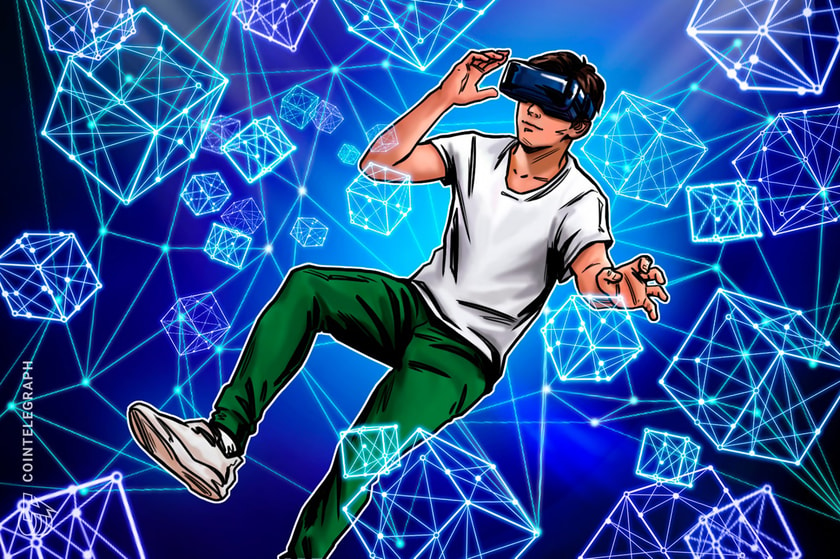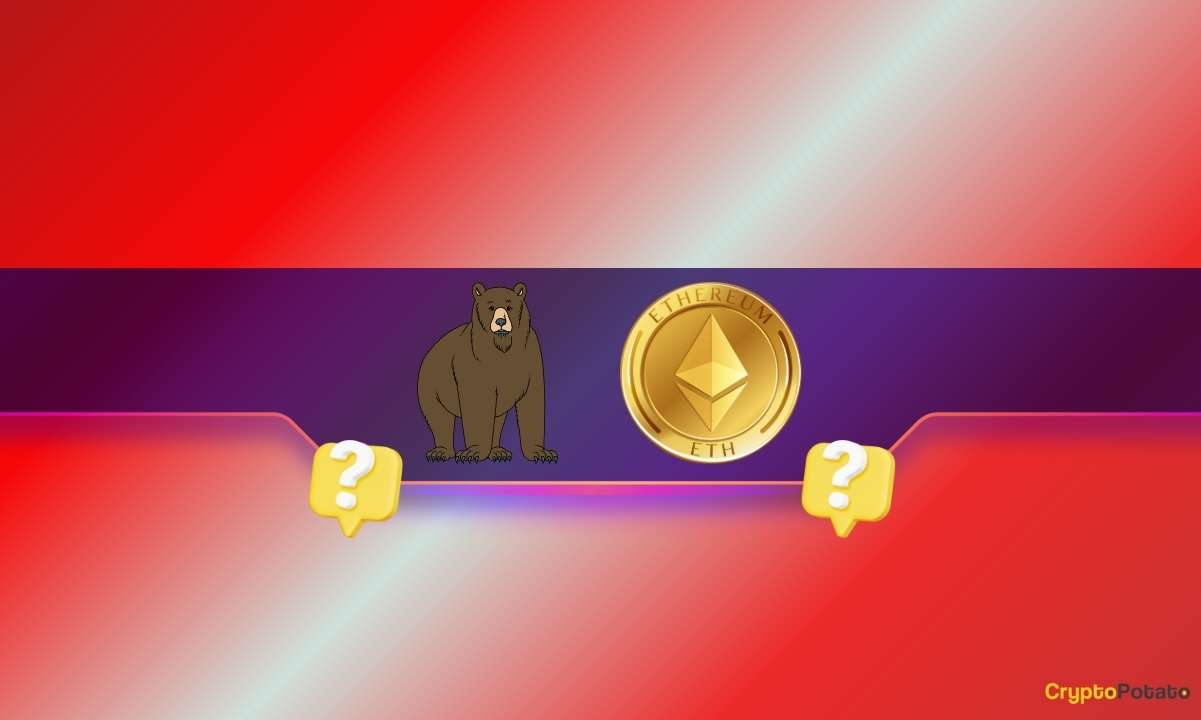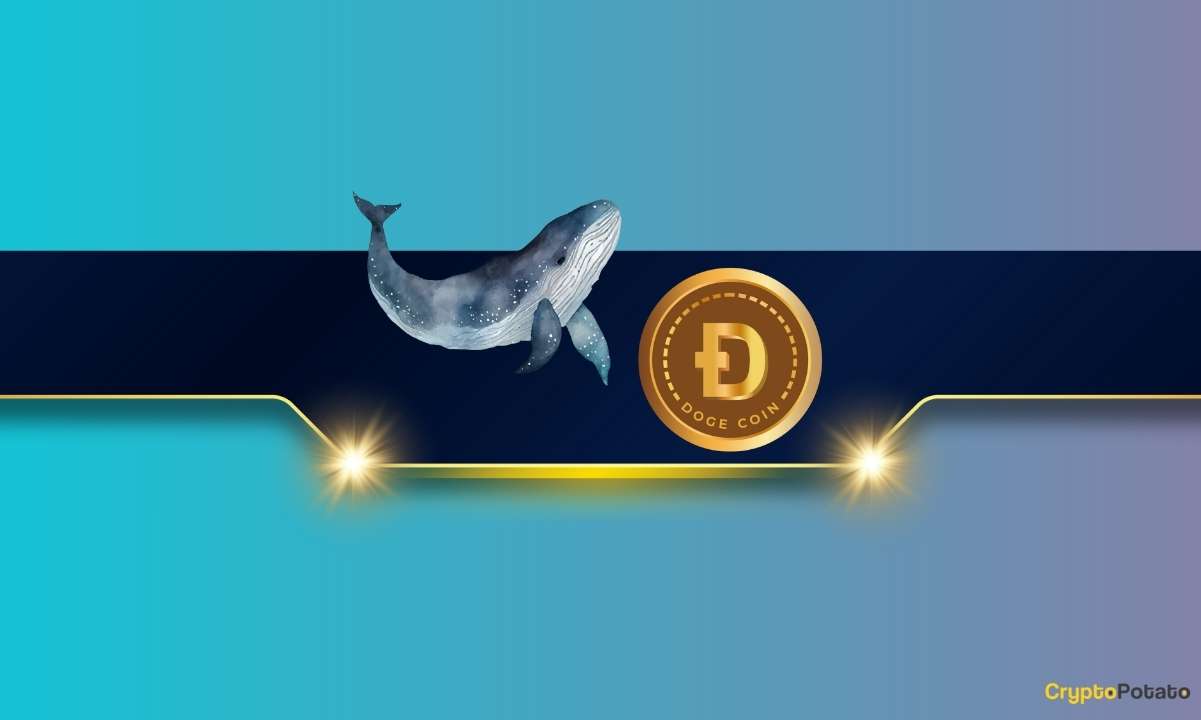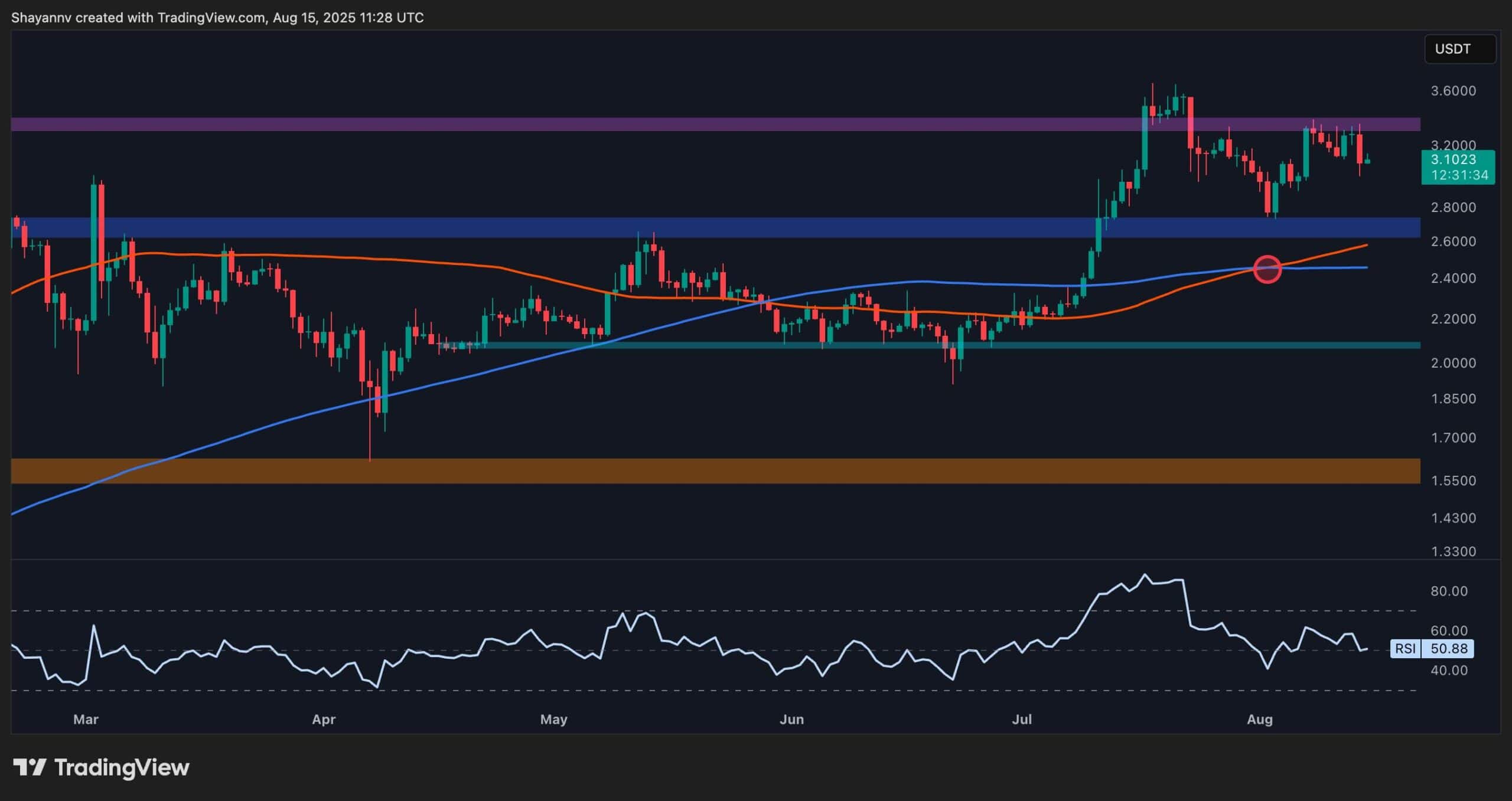Cryptocurrency
AI a powerful tool for devs to change gaming, says former Google gaming head

The world embraced artificial Intelligence (AI), hoping to see it transform complex and day-to-day processes. While generative AI models won millions of users, discussions around the transformative potential of AI in all walks of life became mainstream.
Today, AI is being tested across all business verticals as entrepreneurs challenge the status quo, streamlining and automating processes in varying industries. This drive also resurrects ecosystems that have lost their vigor over years of trial and error.
In the quest to find the true potential of this technology, humanity continues to infuse AI elements into existing systems in the hopes of outperforming current limitations.
The gaming ecosystem sees AI as a means to supersede incremental upgrades. From reutilizing seasoned hardware to squeezing out the price-performance ratio from the latest graphics processing units (GPUs), the gaming industry sees AI’s potential to redefine how gamers of the future will consume their products.
“AI will be one of the most important tools for game developers to improve their work output and production, and unlock rich and new experiences for gamers,” said Ryan Wyatt, the former global head of gaming partnerships at Google and former head of gaming at YouTube.
Wyatt’s exposure to gaming — on both professional and personal fronts — allowed him a special viewpoint at the intersection of a gamer’s wishful thinking and an entrepreneur’s reality check.
Wyatt garnered over two decades of gaming experience before entering crypto as the CEO of Polygon Labs, eventually retiring as the president to take up an advisory role for the blockchain company.
Speaking to Cointelegraph, Wyatt reveals how AI could potentially transform the gaming ecosystem and what it could mean for the future of blockchain gaming.
Cointelegraph: What is the role of AI in the gaming ecosystem?
Ryan Wyatt: The term “AI in gaming” has been overused to the point of exhaustion. In my opinion, it is simply another powerful tool in the developer’s toolkit, which is already extensive and continues to grow. This expansion of toolsets — AI being one of them — will enable a variety of new gaming experiences that we have never seen before and allow game developers to do more. We often talk about AI as a replacement for the work being done in gaming, but I strongly disagree. I see it as a powerful tool that will allow game teams, both small and large, to do more than they ever could before, which may require human resources to be leveraged differently but not minimize or diminish the importance of the many roles required to make a game. And in return, gamers will get to experience games that were never deemed possible before.
CT: Can AI potentially take up the heavy computational tasks that currently rely solely on GPUs? Do you think AI could allow us to repurpose legacy systems that contribute to e-waste, or is it just wishful thinking?
RW: This is a tough one. I do think it is wishful thinking to assume that AI can repurpose all these legacy systems and reduce e-waste. Based on the track record of how hardware has grown and advanced so much over the last two decades, there’s no indication to believe we’re moving in the right direction here, as we’ve continued to increase e-waste over the last 10 years. From a technology standpoint, we’re constantly evolving, and the necessity and demand to expand on hardware, specifically with the GPU, continues to increase significantly. I believe there will be a number of optimizations that AI can introduce to the problem: offloading more resources to the CPU, optimizing for legacy systems, etc., but I think it’s wishful thinking to assume we can reduce e-waste as we continue to push the limits of technology and hardware to create things that were never imaginable before. This seems like a problem that isn’t going to be meaningfully resolved over the next decade, and, in fact, I anticipate it to get worse before it gets better, with AI exacerbating the issue in a 5–10 year time horizon.
CT: If AI could be used for graphics optimization, unlimited (free world) map rendering or a storyline that never ends, but you could choose only one, which one would you choose as a gamer, and why?
RW: This is a matter of personal preference, but I hope we see both. I believe that storylines and NPCs [non-player characters] could evolve greatly from where they are today. We have seen amazing and beautiful open worlds expand in parallel with computational and hardware improvements. While not unlimited, expanding worlds have played a meaningful role in games over the last decade.
Recent: FTX’s $3.4B crypto liquidation: What it means for crypto markets
To me, one area that needs to evolve is how we engage with NPCs in games. This has been rather archaic for quite some time and has largely relied on linear lines of pre-programmed communication and dialogue. This is already changing with companies like Inworld AI and the work they are doing; their tech helps a game developer craft unique and memorable AI NPCs with its fully integrated character engine.

Their engine goes beyond large language models (LLMs) by adding configurable safety, knowledge, memory and other controls in place. The characters then have distinct personalities and contextual awareness, which is insane to see from a gamer’s perspective.
We haven’t had these kinds of dialogue interactions inside of games before, so it’s hard to wrap your head around how it will change the industry because it’s just something that was once unfathomable. Once these developer tools are seamlessly integrated into proprietary engines of large AAA publishers, you’ll see a new era of immersive game experiences. I also believe you’ll see a huge burden lift on the game development cycle that will allow for expansive worlds by not just large studios with companies like Kaedim; you effectively reduce all of the hours lost in modeling by simply generating stunning 3D art with nothing more than an image. These are the types of tools that are going to advance and multiply game development and usher us into a new era of gaming.
The interesting thing is the collision of both of these topics over the next decade!
CT: What are your thoughts on blockchain gaming? How did you find it different from traditional/mainstream titles?
Blockchain gaming is another tool in the toolbelt for game developers and gamers to change the way we interact with games. By storing assets and information on a blockchain, which is not owned by any intermediary, we can expand upon value exchange between game developers, users and gamers (peer-to-peer). This is done inefficiently today, and although some examples come close, such as CS:GO, it is still far from perfect.
The entire crypto space is going through a much-needed reset, washing away bad actors, and from the dust, you will see true, well-intended pioneers and innovators emerge. The unfortunate abuse of the financial aspects of crypto has made many game developers, especially in the West, apprehensive about incorporating blockchain technology into their gaming infrastructure stack, which I believe is temporary.
However, in the East, we are seeing top gaming developers (e.g., Square Enix and Nexon) fully commit to blockchain gaming due to the new game mechanics and relationships that can be created between gamers and developers. I fully expect the re-emergence of blockchain conversations being driven by the application layer in 2024 to 2025, which will do a better job of illustrating the power of launching games on blockchain infrastructure stacks, even if only certain aspects of games are built on them. The last three years of crypto have been dominated in conversation at the infrastructure (blockchain) layer and finance (decentralized finance (DeFi) sector, and ironically, the abuse has come from bad actors of centralized platforms (such as FTX) that don’t even embrace the core values of decentralization.
CT: From a gamer’s perspective, what do you think AI can do to help the widespread adoption of blockchain gaming?
RW: I’m not sure if blockchain gaming will become widely adopted anytime soon; we’re still years out from this, and there are great companies that are pushing the envelope here, like Immutable, but I do think that as AI becomes materially indistinguishable from reality, there is value in blockchains holding accountability over the advancement of AI. This is because blockchains are transparent and immutable, meaning that they can be used to track and verify the provenance of AI-generated content. This is important because it will help to ensure that AI is used ethically and responsibly and that it does not create harmful or misleading content.
I am certain that we will see blockchains in the future host authentic and verifiable information in a world where things coming from AI become indistinguishable from reality. This is because blockchains provide a secure and tamper-proof way to store data, which is essential for ensuring the authenticity and reliability of AI-generated content.
CT: Despite the involvement of the people behind mainstream titles, the blockchain gaming industry has not taken off, unlike other crypto sub-ecosystems. What could have been done differently?
RW: I think this is largely misguided due to timing expectations and the underwhelming first iteration of blockchain games. Game development cycles are so long, and the first batch of blockchain games were either rudimentary, rushed to market, had the wrong incentive mechanisms, were not highly produced or had other issues. There also have been blockchain infrastructure woes that have needed time to overcome, [such as] gas costs, difficult user journeys to navigate and other infrastructure challenges that are just now starting to be resolved by layer-1 and layer-2 protocols.
However, I’ve seen a lot of amazing blockchain games in development that will be released in 2024 to 2025. These games will truly explore the uniqueness that blockchain games have to offer. Games are such a monumental lift to create, and the ones that go deep with either small or large teams will ultimately need more time to show their work. There has been an outsized amount of capital deployed into blockchain games, in the several billions of dollars, and we’ve only seen a single-digit percentage of releases from that cohort of investment.
CT: What went wrong with blockchain gaming? Why don’t gamers buy into the idea of play-to-earn?
Play-to-earn as a philosophy isn’t that crazy. Game developers are always looking to reward gamers for spending more time in their game because longer session times equate to more value, which is captured by the game developer. So, conceptually, this idea of putting time into a game and being rewarded for it isn’t a new game mechanic.
Play-to-earn in blockchain games tries to expand upon this concept of value exchange from developer to player.
Magazine: Blockchain detectives: Mt. Gox collapse saw birth of Chainalysis
However, the economies are really difficult to balance when you don’t have the autonomy over every aspect of them due to the nature of them being decentralized. Ultimately, this has either led to pure abuse of the category, unfortunate attempts to do right and fail or will need more tinkering to ultimately find the right token and economic strategy.
CT: Speaking from a different angle, what benefit could AI and blockchain bring to mainstream gaming? What could compel developers to adopt and infuse the tech into their existing gameplay?
RW: There is certainly a chicken-and-egg issue here. Game developers need to push the limits of what these technologies can do, learn from it, iterate on it and then showcase it to gamers to see if this is what they truly want. But at the end of the day, the large games continue to dominate viewership on YouTube and Twitch.
Steam’s top games, such as DotA and CS, have remained juggernauts, and breakout hits like Minecraft and Roblox are generational unicorns. Both of these games took over a decade to materialize into what we know them to be today. In order to achieve mass adoption, you will need to see these games permeated with the technology. I believe that both of these technologies — AI and blockchain — will have breakout moments from native app developers and indie game devs. However, for true mass adoption, larger players will inevitably need to incorporate the technology.
Disclaimer: Wyatt is an angel investor in many AI, Gaming and blockchain companies, including Immutable and Kaedim, both of which are mentioned in his responses.
Collect this article as an NFT to preserve this moment in history and show your support for independent journalism in the crypto space.
Cryptocurrency
Ethereum Foundation, Whales, and Hackers: What’s Driving the ETH Sell-Off?

TL;DR
- Whales, hackers, and the Ethereum Foundation wallets moved over $500M in ETH through large sales and withdrawals.
- Ethereum transfers rose to 4.6M ETH, nearing the monthly high of 5.2M recorded in July.
- Staking inflows hit 247,900 ETH, the highest in a month, locking more supply from trading.
Large Withdrawals and Whale Activity
Ethereum (ETH) has seen heavy movement from major wallets over the past few days. On-chain data from Lookonchain shows a newly created wallet pulled 17,591 ETH, worth $81.62 million, from Kraken in just two hours.
Over three days, two new wallets withdrew a combined 71,025 ETH, valued at $330 million, from the exchange.
One of these wallets, address 0x2A92, has withdrawn 53,434 ETH, worth $242.34 million, in two days. This includes a recent purchase of 30,069 ETH, valued at $138.46 million, during a market drop.
Major ETH Holders Offload Millions Amid Price Rally
In contrast, several separate entities have been disposing of some ETH holdings. A wallet tied to a hacker address 0x17E0 sold 4,958 ETH for $22.13 million at $4,463, securing a profit of $9.75 million. Earlier this year, the same address sold 12,282 ETH at $1,932 and later bought back part of the amount at higher prices.
A different whale sold 20,600 ETH for $96.55 million over the past two days, generating a profit of more than $26 million after holding the position for nine months.
Meanwhile, an Ethereum Foundation-linked wallet, 0xF39d, sold 6,194 ETH worth $28.36 million in the last three days at an average price of $4,578.
Recent sales from the same wallet included an additional 1,100 ETH and 1,695 ETH for over $12.7 million combined.
The #EthereumFoundation-linked wallet(0xF39d) sold another 1,300 $ETH($5.87M) at $4,518 ~11 hours ago.
Over the past 3 days, this wallet has sold a total of 6,194 $ETH($28.36M) at an average price of $4,578.https://t.co/4hfCWymHVG pic.twitter.com/ErUyEY8SJy
— Lookonchain (@lookonchain) August 15, 2025
Network Activity on the Rise
CryptoQuant data shows Ethereum’s total tokens transferred have been climbing since August 9. After ranging between 1 million and 3 million ETH through late July and early August, transfers have risen to 4.6 million ETH, approaching the monthly high of 5.2 million recorded in mid-July. This increase has occurred alongside a price rally from about $3,400 to $4,600.
Interestingly, staking inflows generally stayed between 20,000 and 80,000 ETH per day over the past month. On August 14, inflows jumped to 247,900 ETH, the highest in the period.
At the time, ETH was trading near $4,600. Large staking deposits reduce the amount of ETH available for immediate trading, as staked coins are locked for a set period.
In the meantime, ETH trades at $4,647 with a 24-hour volume of $68.25 billion, down 2% on the day but up 19% over the week.
Binance Free $600 (CryptoPotato Exclusive): Use this link to register a new account and receive $600 exclusive welcome offer on Binance (full details).
LIMITED OFFER for CryptoPotato readers at Bybit: Use this link to register and open a $500 FREE position on any coin!
Cryptocurrency
Massive DOGE Whale Activity Hints at $1 Breakout

TL;DR
- Whales bought two billion DOGE this week, lifting their combined holdings to 27.6 billion coins.
- A single 900M DOGE transfer worth $208M to Binance drew attention to large exchange movements.
- DOGE broke key resistance, with momentum building for a possible push toward the $1 price mark.
Price and Market Moves
Dogecoin (DOGE) traded at $0.23 at press time, slipping 4% over the past day but still showing a 2% gain for the week. Daily turnover came in at about $6.18 billion.
Meanwhile, the broader crypto market saw over $1 billion in liquidations. Hotter-than-expected US Producer Price Index data pushed traders to scale back expectations of a near-term Federal Reserve rate cut. DOGE had roughly 290,500 coins liquidated during the sell-off.
On the two-week chart, analyst Trader Tardigrade notes that DOGE has cleared a downward-sloping resistance line after completing what appears to be a “wave V” in an Elliott Wave sequence. Similar setups in the past, where prolonged declines stayed within falling channels before breaking higher, have been followed by sharp rallies.
$Doge/2-week#Dogecoin is gaining strong momentum to surge above $1 pic.twitter.com/TuSEKr19nv
— Trader Tardigrade (@TATrader_Alan) August 15, 2025
Momentum gauges are also turning up. The Stochastic RSI, which had dropped into oversold territory, is now heading higher. Previous reversals from this zone have coincided with sustained upward moves. The current formation points to a possible run that could carry DOGE past the $1 mark.
Heavy Whale Buying and Large Transfers
As reported by CryptoPotato, blockchain data shows large investors have added two billion DOGE in the past week, spending just under $500 million. That brings their holdings to about 27.6 billion coins, or 18% of the supply. The buying streak has prompted speculation within the community.
Recently, Whale Alert flagged a 900 million DOGE transfer worth about $208 million into Binance. The tracking indicates that it originated from a wallet connected to the exchange, likely as an internal activity. The address involved holds 2.88 billion DOGE, one of the largest balances on the network.
Ali Martinez also reports that transactions above $1 million reached a one-month high, with activity building since early August and peaking as DOGE traded at $0.25.
Whales are back! Dogecoin $DOGE activity at a 1-month high. pic.twitter.com/C83Pv68mCt
— Ali (@ali_charts) August 14, 2025
Sentiment Building
Analyst Gordon described the current setup as “a nice bit of consolidation” before a potential breakout, adding,
“This will be one of the first coins normies FLOCK to & the pump will be MASSIVE.”
With whale accumulation rising, high-value transfers increasing, and a bullish technical pattern in play, DOGE is positioned for a potential push toward $1 if momentum holds.
Binance Free $600 (CryptoPotato Exclusive): Use this link to register a new account and receive $600 exclusive welcome offer on Binance (full details).
LIMITED OFFER for CryptoPotato readers at Bybit: Use this link to register and open a $500 FREE position on any coin!
Cryptocurrency
Ripple Price Analysis: XRP at Risk as Key Support Levels Could Trigger Sharp Drop

XRP has recently entered a consolidation phase after a strong rally earlier this summer, with the price action now hovering around key resistance levels on both its USDT and BTC pairs. Yet, while momentum has slowed, the charts still indicate a generally bullish structure, with multiple key support levels remaining firmly in place.
Technical Analysis
By ShayanMarkets
The USDT Pair
On the XRP/USDT daily chart, the price is currently trading near the $3.10 mark, facing a strong resistance zone around $3.40. This follows a breakout above the $2.70 range in July, which has now flipped into a support area.
Both the 100-day and 200-day moving averages are also trending upward and recently formed a bullish crossover around $2.45, reinforcing the medium-term bullish sentiment. If the $3.40 resistance breaks, a push toward the critical $4.00 range becomes likely.
However, the RSI hovering near the neutral 50 level suggests a lack of strong momentum for now, meaning a short-term pullback into the $2.80 support zone is still possible.
This zone will be key for maintaining the bullish structure. Losing it could open the door for a deeper correction toward the 200-day moving average located around the $2.40 mark. Yet, as long as the price stays above the moving averages, the broader trend remains bullish.
The BTC Pair
Looking at the XRP/BTC chart, the pair has recently pulled back after hitting the 3,000 SAT resistance, with the price currently around 2,600 SAT.
This follows a clean breakout above the long-term descending channel and a successful retest of its upper boundary, which coincided with the 200-day moving average and the 2,400 SAT support zone. This confluence remains a key bullish technical factor, as holding above it could attract renewed buying pressure.
That said, RSI levels around 48 show that momentum has cooled after the sharp July rally, meaning XRP may continue ranging between 2,400 SAT and 3,000 SAT in the near term. A decisive close above 3,000 SAT would likely open the path to the 3,400 SAT zone, while losing 2,400 SAT could shift the bias back toward 2,000 SAT support. For now, the structure still favors the bulls as long as higher lows remain intact.
Binance Free $600 (CryptoPotato Exclusive): Use this link to register a new account and receive $600 exclusive welcome offer on Binance (full details).
LIMITED OFFER for CryptoPotato readers at Bybit: Use this link to register and open a $500 FREE position on any coin!
Disclaimer: Information found on CryptoPotato is those of writers quoted. It does not represent the opinions of CryptoPotato on whether to buy, sell, or hold any investments. You are advised to conduct your own research before making any investment decisions. Use provided information at your own risk. See Disclaimer for more information.
Cryptocurrency charts by TradingView.

 Forex3 years ago
Forex3 years agoForex Today: the dollar is gaining strength amid gloomy sentiment at the start of the Fed’s week

 Forex3 years ago
Forex3 years agoUnbiased review of Pocket Option broker

 Forex3 years ago
Forex3 years agoDollar to pound sterling exchange rate today: Pound plummeted to its lowest since 1985

 Forex3 years ago
Forex3 years agoHow is the Australian dollar doing today?

 Cryptocurrency3 years ago
Cryptocurrency3 years agoWhat happened in the crypto market – current events today

 World3 years ago
World3 years agoWhy are modern video games an art form?

 Commodities3 years ago
Commodities3 years agoCopper continues to fall in price on expectations of lower demand in China

 Economy3 years ago
Economy3 years agoCrude oil tankers double in price due to EU anti-Russian sanctions

























